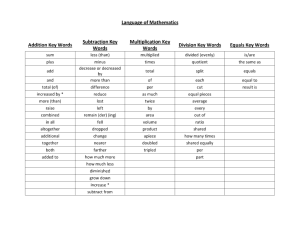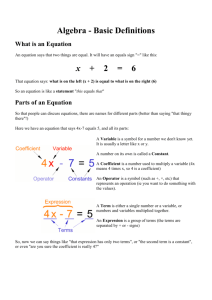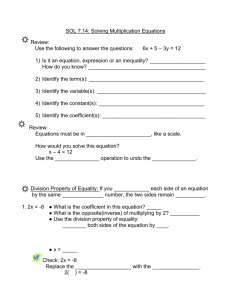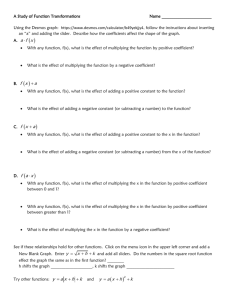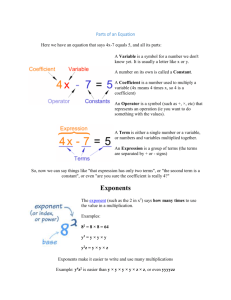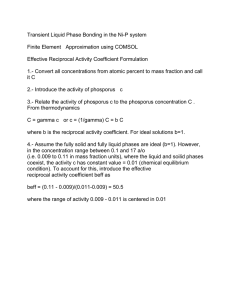Solving Absolute Value Equations
advertisement
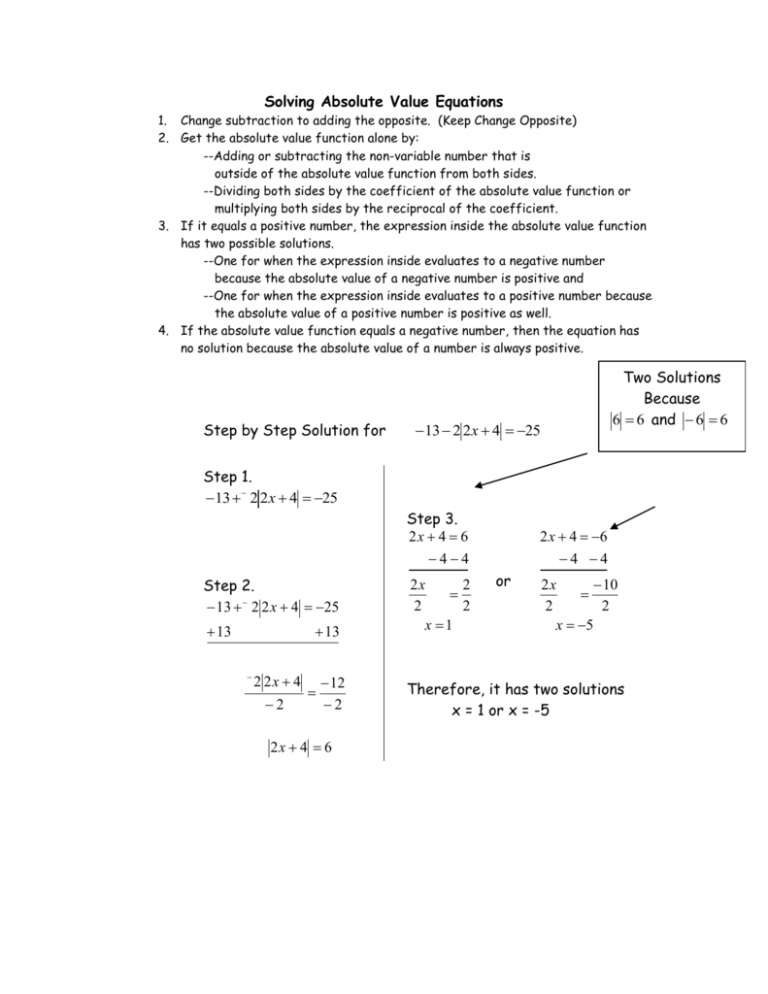
Solving Absolute Value Equations 1. Change subtraction to adding the opposite. (Keep Change Opposite) 2. Get the absolute value function alone by: --Adding or subtracting the non-variable number that is outside of the absolute value function from both sides. --Dividing both sides by the coefficient of the absolute value function or multiplying both sides by the reciprocal of the coefficient. 3. If it equals a positive number, the expression inside the absolute value function has two possible solutions. --One for when the expression inside evaluates to a negative number because the absolute value of a negative number is positive and --One for when the expression inside evaluates to a positive number because the absolute value of a positive number is positive as well. 4. If the absolute value function equals a negative number, then the equation has no solution because the absolute value of a number is always positive. Step by Step Solution for Two Solutions Because 6 6 and 6 6 13 2 2 x 4 25 Step 1. 13 2 2 x 4 25 Step 2. 13 2 2 x 4 25 13 13 2 2x 4 2 12 2 2x 4 6 Step 3. 2x 4 6 2 x 4 6 44 4 4 2x 2 2 2 x 1 or 2x 10 2 2 x 5 Therefore, it has two solutions x = 1 or x = -5
